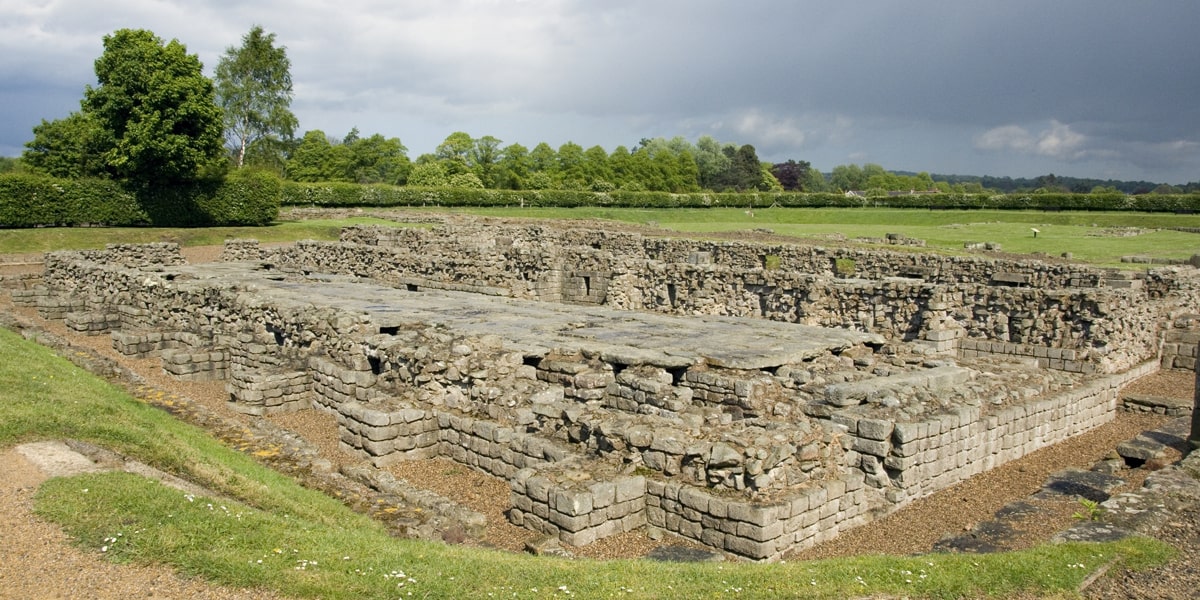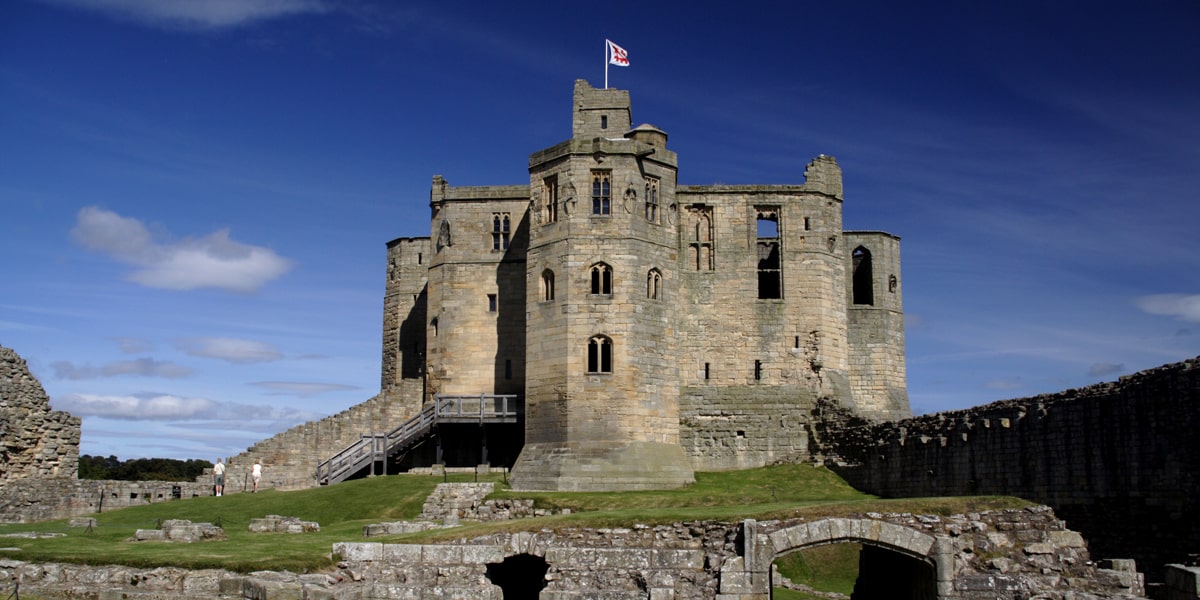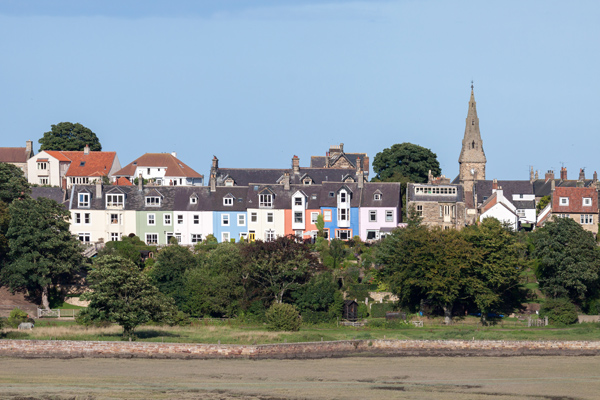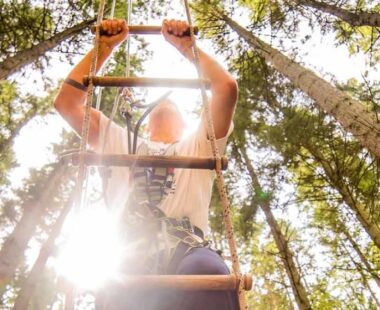Northumberland boasts a vast expanse of countryside and some of England’s finest beaches. Whether exploring Northumberland by foot, bike or car, you will discover a multitude of delightful villages, dotted across an amazing natural landscape, inviting you in for closer inspection.
Areas of Outstanding Natural Beauty combine with spectacular night skies and stunning castles and ancient ruins, all playing their part in making a Northumberland holiday a quite unforgettable experience. Travelling from west to east, from country to coast, we meander through the villages that make the region a must visit UK destination.
Dark skies, Romans and railways
We start in Kielder Water & Forest, the England’s largest forest and one that is largely free of light pollution. As England’s first, and one of Europe’s largest, Dark Sky Parks with Gold-Tier status, the venue now hosts Northumberland’s annual Dark Skies Festival during the month of February. If you are into stargazing head for Kielder Observatory where you will get an unrivalled view of the constellations above.
-

-
Discover some of the darkest skies in the world at the Kielder Observatory
-

-
Get back to nature and explore the Pennine Way National Trail
On the outskirts of the National Park lies the attractive village of Bellingham, a very popular stop for those on either the Reivers Coast to Coast cycle route or the Pennine Way hiking trail. Further south, you will arrive at the glory that is Hadrian’s Wall, the northern-most point of the Roman Empire. Several settlements and forts built by the Romans are clustered in this area, so history enthusiasts will be in their element.
Read more: History and heritage of Northumberland
Trek a further 2.5 miles and you can make your first pitstop for tea and cake at Bardon Mill Store and Tea Room. If you have time, pop into the old woollen mill, Errington Reay, where the famous Bardon Mill Pottery is made.
We continue our journey eastbound halting at historical Corbridge where you will find The Roman Town, managed by English Heritage. The village is also a fantastic location for a spot of retail therapy with plenty of independent boutiques. Once you’re all shopped out, it’s time for lunch at one of the village’s top restaurants: Cassia Corbridge. This family-run Italian restaurant receives consistently high ratings for its delicious classic dishes and cosy atmosphere, so you’re in for a treat.

Experience a time-capsule of Roman life at Corbridge’s Roman Town
Our final stop before reaching the coast is brimming with railway history. The town of Wylam is the birthplace of George Stephenson, considered the father of the British railway. The Wylam Waggonway trail follows the tracks of the rail built to transport coal between Wylam and Lemington and today it makes for an interesting walk or bike ride. You will come across the miner’s cottage where Stephenson was born and which is now managed by The National Trust. Other locomotive attractions include the stationmaster’s house dating back to 1835 and the Wylam Railways museum.
Castles, kippers and tees
We finally reach the coast by heading north to visit the charming village of Warkworth. At one end of the village, we find the magnificent ruins of Warkworth Castle, famously referenced as a scene in Shakespeare’s Henry IV part 1, and at the other end the 12th-century Church of St Lawrence which has the longest Norman nave of all Northumberland churches.

View the impressive keep as you wander around the spectacular Warkworth Castle
Almost entirely encircled by the Coquet River, Warkworth is one of those enchanting villages where you simply want to linger for that bit longer. But if you fancy a little adventure you can opt for a river boat ride to visit the medieval Warkworth Hermitage, a chapel carved into the rock face – keep an eye out for seals and otters whilst en route!
Carrying on up the coast, our next port of call is Alnmouth, with its colourful pastel houses sitting along the banks of the River Aln. The village is pure picture postcard, the view from Riverside Road across the estuary to Church Hill is one of the most memorable. A lovely eaterie in the village is the family-run Bistro 23 where you can taste the freshness of the locally sourced produce in their exquisite dishes. But leave a little room for our next stop…Have you heard of Craster Kippers?
-

-
Pastel-coloured houses strung along the River Aln welcome you to Alnmouth
-

-
The fishing village of Craster is famous for its smoked kippers
The fishing village of Craster is often regarded as the birthplace of the kipper and is famous across the world for its delicious delicacy. Prepared in the 100-year old smokehouse belonging to the fourth generation of the local Robson family, it is worth a visit to see the process first hand while also visiting the adjacent shop.
Speaking of seafood, The Jolly Fisherman Craster offers a generous variety of mouth-watering dishes, which include crab, oyster and lobster as well as delicious vegetarian options. Once you have re-fuelled and feel a little exercise is in order, take a walk northbound along the beach and up to the ruins of Dunstanburgh Castle. Although the centuries have not been kind, you can still get an idea of the vast scale of the fortress that once stood here.
We will hop from castle to castle into our next stop: Bamburgh. As the royal capital of the kingdom of Northumbria, Bamburgh has a fascinating Anglo-Saxon history. The imposing Bamburgh Castle sits on the end of the cliff with drifting sand dunes below, giving it a magical and mysterious aura that is enhanced by joining a Dragon hunt or Ghost tour on the grounds. After a busy day exploring, drop by the Driftwood Café for a delicious homemade cake.

Bamburgh Castle has stood guard above the spectacular Northumberland coastline for over 1,400 years
Only 6 miles away we head towards our final stop of the trip, the ancient village of Belford, dating back to around 1272, where you can still see the medieval cross in Market Square. In the mid-1700s, Belford boomed thanks to its weekly market with people visiting from across North Northumberland. Today the high street is lined with Georgian terraces, independent shops and restaurants.
Be sure to visit the Holy Island of Lindisfarne with its priory dating back to 653AD, which can be reached from Belford by crossing a causeway. It’s a tidal island so when the tide is high it washes over the causeway, making the island inaccessible. This happens twice a day so make sure you check the Tide Times for Holy Island before visiting. Before you leave, be sure to try Lindisfarne mead, a fortified wine with honey and herbs produced on the island.
If you have yet to visit the villages of Northumberland there is no time like the present. If you have been before we fully expect you to be planning your return to one of England’s finest regions.
Uncover the history of Corbridge’s Roman Town
Read more
Top 10 reasons to visit Northumberland
Bamburgh skeletons reveal secrets of multi-cultural Anglo-Saxon life


















